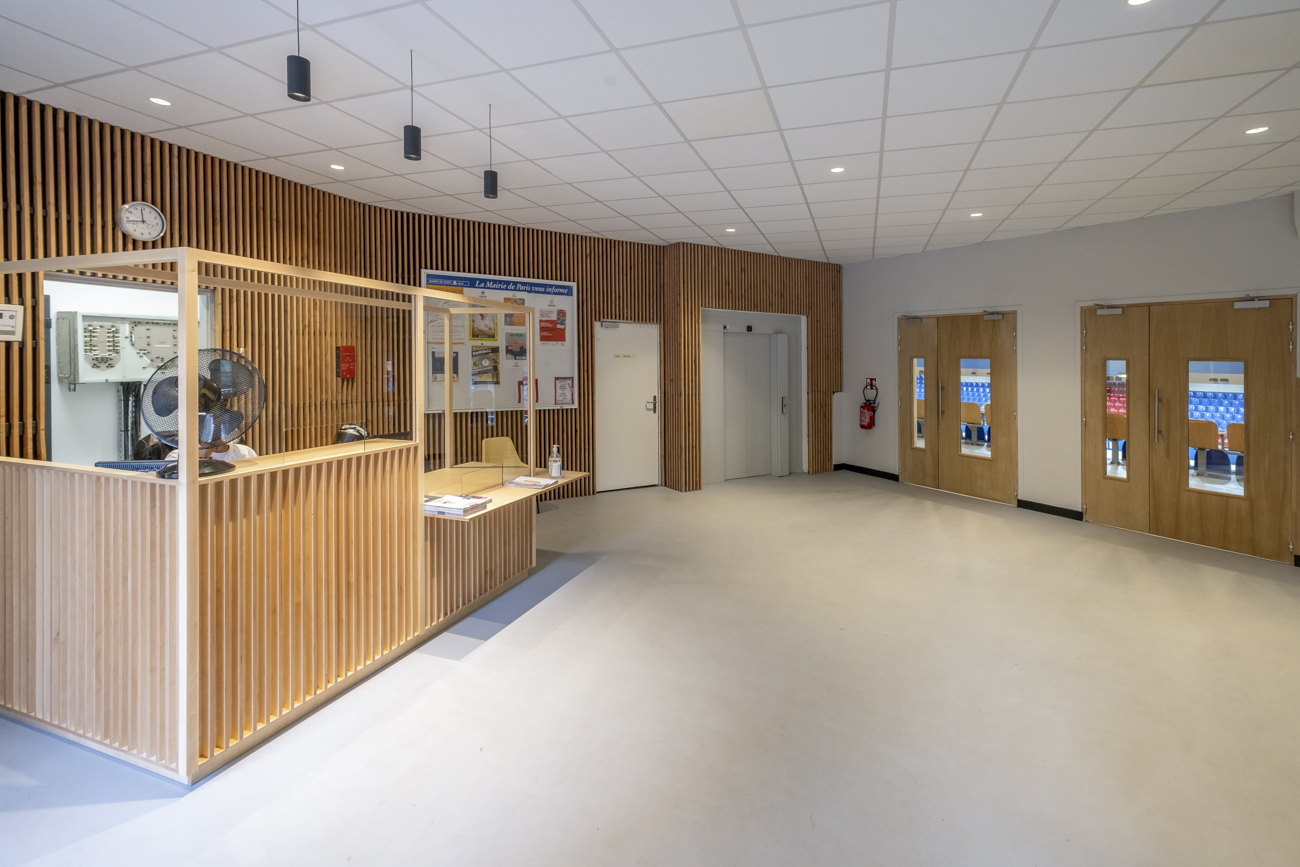Content
Cette page est aussi disponible en français
Ramps, elevators, passageways and changing rooms… The future Olympic training center has been renovated to allow for improved disabled access.
At Porte de Saint-Cloud (16th arrondissement), the Pierre-de-Coubertin stadium, inaugurated in 1937, has had a makeover. Ahead of the 2024 Olympic and Paralympic Games, along with four other Parisian sports centers, it has been turned into a disability-friendly venue.
"Coubertin has become a model venue in terms of accessibility" says Christian Sanchez, project manager at the city's Olympic and Paralympic Games delegation (DGJOP).
"Coubertin has become a model venue in terms of accessibility" says Christian Sanchez, project manager at the city's Olympic and Paralympic Games delegation (DGJOP).
During the Olympic Games, the venue will host training sessions for rhythmic gymnastics and trampoline teams. Prior to hosting athletes globally, Coubertin's facilities have been modified to accommodate individuals with disabilities or limited mobility. Coubertin is not only the "home" of PSG Handball, its resident club, it also welcomes numerous associations, clubs and school groups, so the renovation is a positive legacy for the site's thousands of users.
The Coubertin stadium in pictures

The building, inaugurated in 1937, is now accessible to all disabled people.
Crédit photo :
Clément Dorval / Ville de Paris

Coubertin is home to PSG Handball and numerous associations, clubs and school groups.
Crédit photo :
Guillaume Bontemps / Ville de Paris

The corridors have all been adapted to accommodate people with disabilities.
Crédit photo :
Guillaume Bontemps / Ville de Paris

The passageways have been adapted to accommodate wheelchair users.
Crédit photo :
Clément Dorval / Ville de Paris

The reception area has been refurbished and an elevator installed.
Crédit photo :
Clément Dorval/Ville de Paris

The annex courts are now accessible by elevator.
Crédit photo :
Clément Dorval / Ville de Paris

A "quiet zone" offers a place of respite for people with autistic disorders.
Crédit photo :
Clément Dorval/Ville de Paris

The changing rooms are now accessible to all, with adapted seating.
Crédit photo :
Clément Dorval / Ville de Paris
Accessibility is evident from the very outset. Two ramps have been installed: one leading to the spectator entrance, the other to the athletes' entrance (associations, clubs…). The sidewalks along the two avenues next to the stadium are being expanded as well for the benefit of all pedestrians. A lot of pedestrians pass by Coubertin," notes Christian Sanchez, "given the proximity of office buildings and the Tennis Club de France.
Doors and windows have also been renovated and brought up to accessibility standards, respecting the visual aspect of a red-brick building constructed for the 1937 Universal Exhibition, rebuilt in 1946 (an Allied bombardment had destroyed part of the building in 1943) and refurbished in the 1990s.
Elevators, corridors, changing rooms…
Upon entering, you will find a newly designed reception area that is also accessible to wheelchair users. There is also a new feature: an elevator serving every level, including one of Coubertin's two side courts. Another elevator has also been built to serve the second court.
Behind the reception area, the center court, the large de Coubertin hall seating over 4,000, is now 100% accessible. The walkways have been redesigned with dedicated spaces for people with reduced mobility, and major soundproofing work has been carried out: new flooring, installation of sound traps - large grey cubes placed in the ceiling to limit noise and renovated ceilings that attenuate sound. Everything has been thought out to ensure spectators' hearing comfort.
A "quiet zone" in the stadium
A "quiet zone," specifically designed for individuals with autism spectrum disorders, has been established, featuring a soundproof surface. Regarding lighting, spectators in the center court will enjoy the advantages of new, energy-efficient LED lighting. Coubertin is now equipped with high-performance lighting that conforms to the most stringent international standards for sports competitions.
Last but not least, the refurbishment has enabled the sanitary facilities and changing rooms to be renewed and adapted to the needs of disabled people. A notable innovation in changing rooms is the introduction of sliding wooden seats, designed to ease the process of dressing for athletes with disabilities. A guidance system and signage adapted for the visually and audibly impaired were also installed.
The second life of Parisian cobblestones
The paving stones used to renovate Coubertin's outdoor spaces were recovered from the city's paving depot in Bonneuil-sur-Marne (Val-de-Marne).
What are accessible games? The answer with the Enjeux podcast!
Get all the news on disruptions and opportunities related to the Games with the Paris Infos Jeux 2024 newsletter.
We want to hear from you!
Was this information useful to you?
Please note: we cannot reply via this form (please do not include any personal information).
